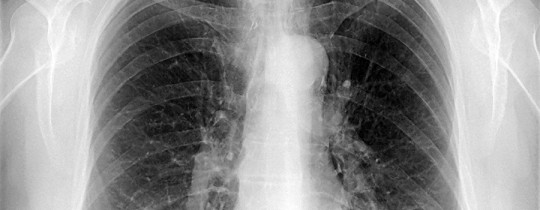Tuberculosis

Tuberculosis, also known as TB, is a common and often lethal disease which typically attacks the lungs, although it can affect other parts of the body. About 1/10th of latent infections will progress to the active disease, which if not treated properly kills more than half of people infected. About 1/3rd of the world’s entire population has been infected with tuberculosis. New infections occur every second, although the number of cases has been decreasing since 2006. TB is more common in African and Asian countries, where about 80% of the population test positive for TB. In the United States, only 5-10% of the population is infected. This is because many people in the developing world have compromised immune systems due to high rates of HIV.
Symptoms
Tuberculosis most commonly occurs in the lungs, which is called pulmonary TB. When it develops outside of the lungs and affects other parts of the body, it is referred to as extrapulmonary TB. General symptoms include chills, fever, loss of appetite, night sweats, fatigue and weight loss. 90% of TB cases are pulmonary. Symptoms of pulmonary TB include chest pain and a chronic cough that produces sputum, as well as occasionally producing small amounts of blood. Pulmonary TB can become a chronic illness, causing serious scarring in the upper lobes of the lungs. Approximately 15-20% of cases see the infection spread to other parts of the body, resulting in extrapulmonary TB. Extrapulmonary TB occurs more frequently in children and in cases where patients also have HIV. Notable infection sites include the lymphatic system (which can cause swollen glands at the side of the neck), the central nervous system, and the bones and joints (which is also called osseous tuberculosis, causing swelling and pain in the knees and hips). There are no symptoms associated when TB is inactive.
Causes
The main cause of tuberculosis is a small, aerobic bacillus called Mycobacterium tuberculosis. People who have inactive TB infections are not contagious; only people who have active TB infections can spread the bacteria, either by sneezing or coughing. The elderly, people with substance abuse problems, homeless people, and people with weakened immune systems from AIDS or HIV are among the people who are at greatest risk for active TB infections.
Prevention
The vaccination of infants, and detecting active cases of TB early and applying the necessary treatments are the main prevention efforts. The World Health Organization has achieved a small decrease in case numbers and some small success by implementing improved treatment regimens. The bacillus Calmette-Guerin vaccine is the only current vaccine available; it provides inconsistent protection at best against contracting pulmonary TB, although it does help fight against disseminated disease in children. More than 90% of children worldwide are vaccinated with this vaccine. It is only administered to people at high risk in the United States, the United Kingdom, and Canada, and immunity to TB decreases after approximately 10 years. In 1993, the WHO declared tuberculosis a global health emergency. In 2006, the WHO helped develop a Global Plan to Stop Tuberculosis. It hopes to save over 14 million lives between its launch date and 2015.
Treatment
Effective TB treatment is rather difficult because of the unusual chemical composition and structure of the mycobacterial cell wall; this hinders the entry of the drugs, decreasing the effectiveness of many antibiotics. Still, many doctors use antibiotics to try and kill the bacteria. The most common antibiotics used are rifampicin and isoniazid. For pulmonary TB, 3 or 4 antibiotics are used together for the first couple of months of therapy, and then 2 of these are taken for another 4-7 months. Some people may need to take antibiotics up to a full year. People with latent infections are often treated as well to prevent active TB from occurring later on.
